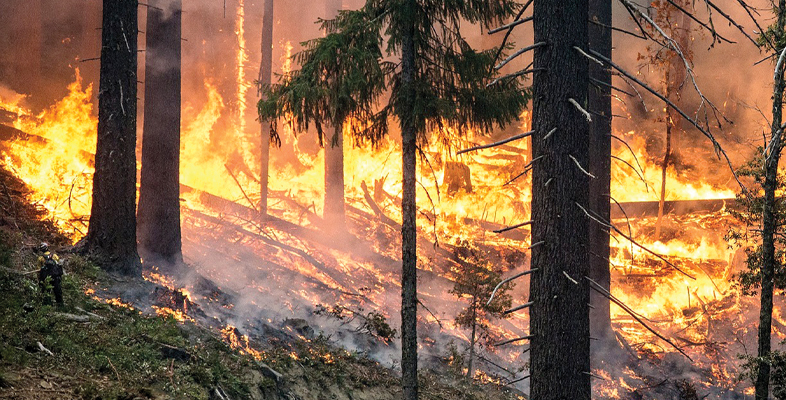1.3 Fire regimes
Fire has predictable features regarding how it spreads across landscapes and the frequency and season of occurrence. Such predictability has led to the concept of a fire regime: the temporal and spatial characteristics of the fire and the impact it has on the landscape (Table 1).
| Fire characteristic | Description |
|---|---|
| Type | There are 3 basic types of fire: crown fires, surface fires and ground fires. |
| Frequency | How often a fire occurs in an area/ecosystem or the return time of a fire to an area/ecosystem. |
| Intensity | Refers to the energy release and is measured by flame length or rate of spread. |
| Severity | A measure of the impact of fire on an ecosystem. In forested ecosystems tree mortality is often used as measure of severity; in shrublands the metric is the mortality of above-ground plants. |
| Size | Spatial extent of the fire. |
| Pattern | Patch size distribution of fire; spatial heterogeneity of fire effects. |
| Season | Time of year that fire occurs. Fire season is determined by the coincidence of ignitions and low moisture in the fuel. This is usually the driest time of the year. |
| Duration | Length of time the fire persists. |
The ecological effects of fire depend largely on the fire regime but the concept of a fire regime is far from simple. The variability in the characteristics listed in Table 1 coupled with the interaction of these characteristics with other disturbances as well as climate, make fire regimes one of the most complex processes governing landscape dynamics and controlling biodiversity.
Although there are several characteristics that define a fire regime, they are most often described in terms of severity and frequency because these two factors are the most important to land management.
